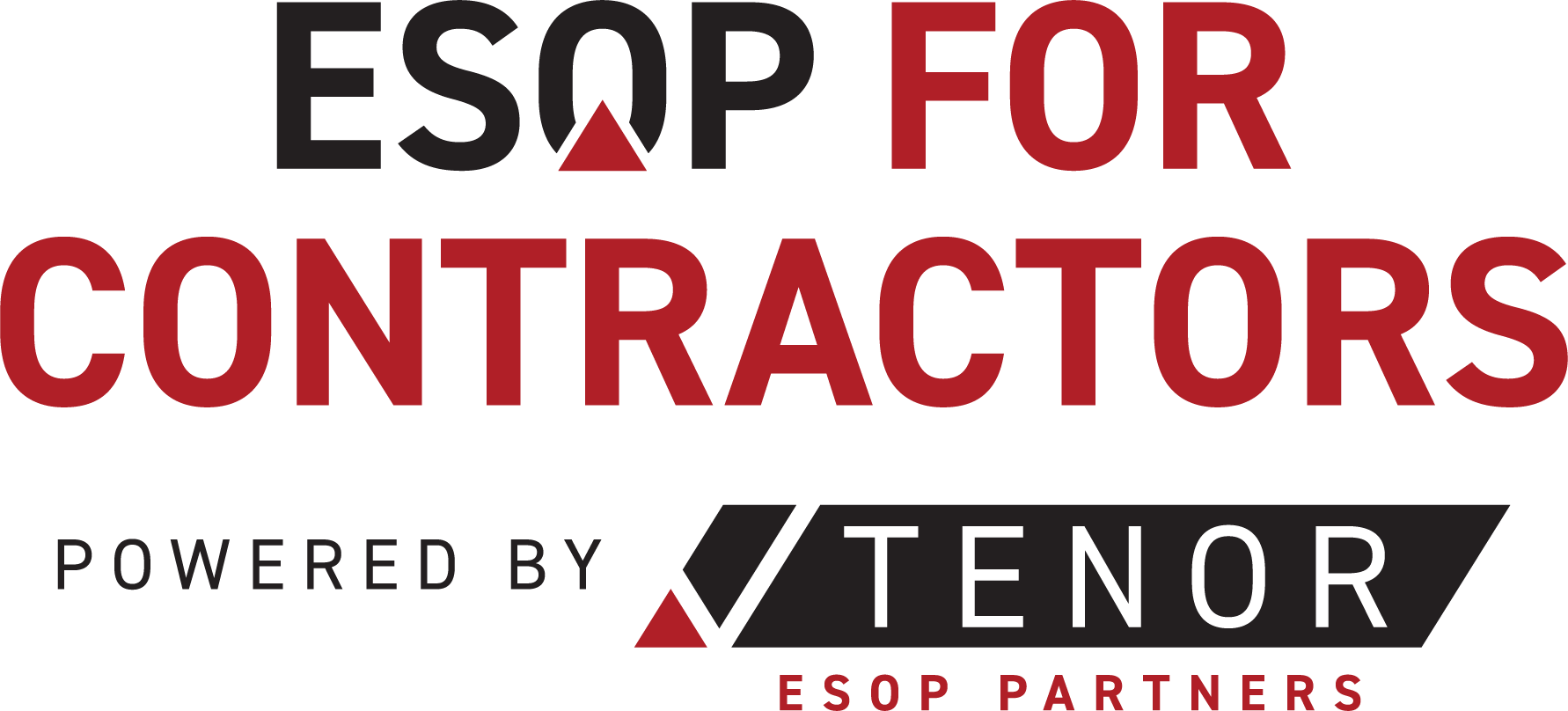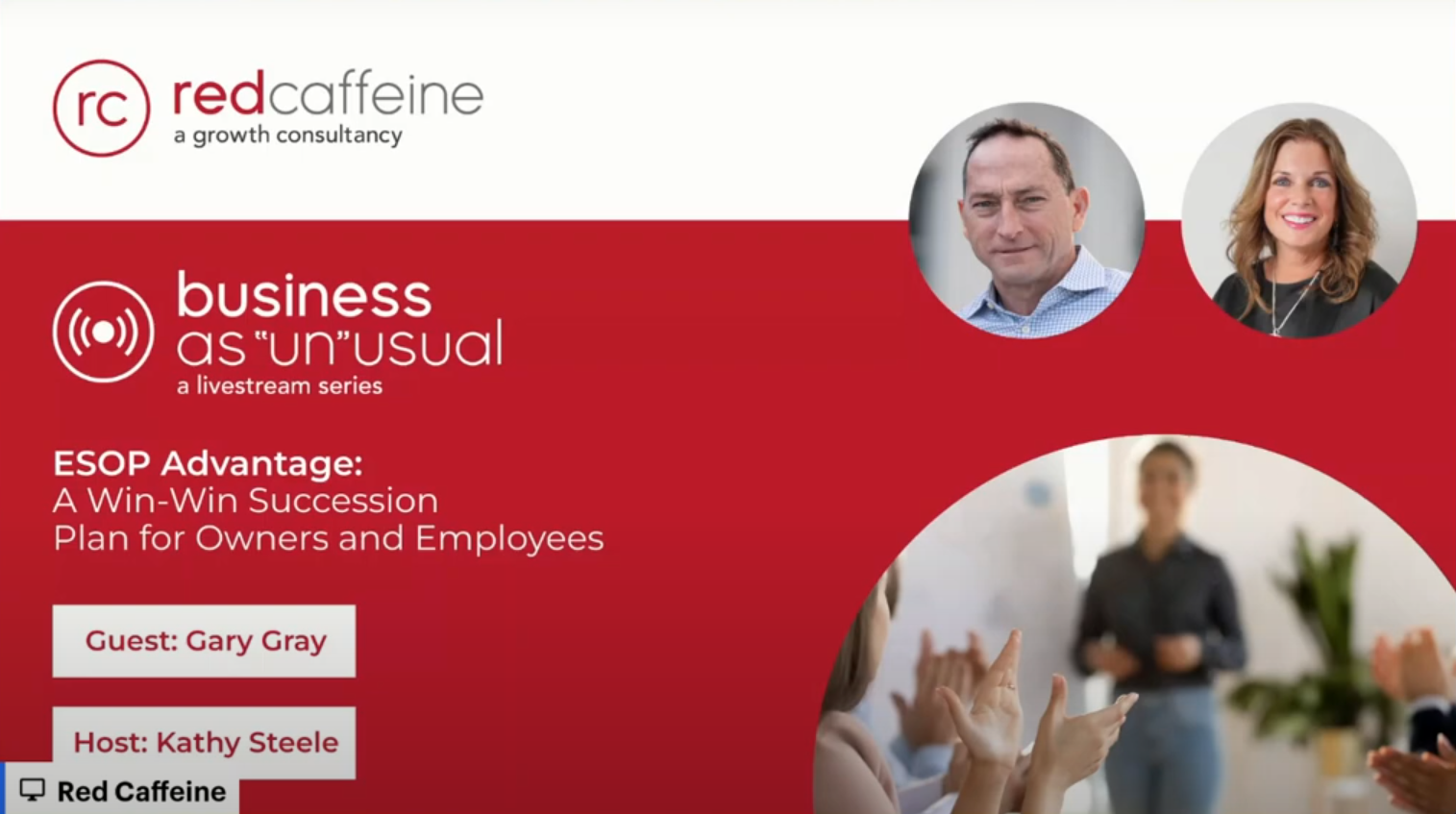Time to read: 6 minutes
Employee Retention Improvements with Contractor Employee Ownership
Introduction: The Critical Role of Retention in Contracting Success
In an industry facing persistent skilled labor shortages, employee retention has become a strategic imperative for contracting businesses. According to the Associated Builders and Contractors (ABC), the construction industry needs to attract nearly 650,000 additional workers on top of the normal pace of hiring in 2022 alone to meet labor demands. Against this challenging backdrop, employee ownership plans have emerged as a powerful tool for contractor employee retention.
This analysis examines how employee ownership specifically impacts retention in contracting businesses, providing data-driven insights across different sectors while highlighting the mechanisms that make employee ownership particularly effective in addressing industry-specific workforce challenges.
The Retention Challenge in Contracting: By the Numbers
Before examining employee ownership impacts, it's important to understand the baseline retention challenges facing contractors:
- The construction industry experiences an average annual voluntary turnover rate of 21.4%, according to the U.S. Bureau of Labor Statistics – significantly higher than many other industries
- A Construction Industry Institute study found that the average cost of employee turnover in construction ranges from 16% to 20% of annual salary for non-supervisory positions and 20% to 150% for supervisory positions
- According to AGC of America surveys, over 80% of construction firms report difficulty filling hourly craft positions
These statistics highlight why retention represents such a critical factor in contractor success, directly impacting project quality, productivity, safety performance, and financial results.
Employee Ownership Retention Impact: Overall Construction Industry Data
Research consistently demonstrates that employee ownership implementation significantly improves retention metrics across the construction industry:
- According to the National Center for Employee Ownership (NCEO), employee-owned construction companies experience turnover rates approximately 9-11% lower than non-employee-owned counterparts within the same industry segments
- A Rutgers University study of closely-matched employee-owned and non-employee-owned companies found that employee-owned construction firms had 26% longer average employee tenure
- Employee Ownership Foundation research indicates that during economic downturns, employee-owned construction companies are 3-4 times less likely to implement layoffs than non-employee-owned firms
These industry-wide statistics demonstrate the significant retention advantage that employee ownership provides. However, the impact varies across different contracting sectors and employee categories.
Sector-Specific Employee Ownership Retention Performance
Commercial General Contractors
Commercial building contractors typically experience the most substantial retention improvements following employee ownership implementation:
- According to FMI Corporation research, employee-owned commercial contractors retain project managers and superintendents approximately 42% longer than non-employee-owned competitors
- Employee-owned commercial contractors report 62% lower project leadership turnover during active projects compared to industry averages
- Commercial contractors with employee ownership experience 28% less voluntary turnover in estimating departments, preserving critical knowledge for accurate bidding
These retention advantages translate directly to project performance, with employee-owned commercial contractors demonstrating 14% fewer schedule delays attributable to staffing issues and 23% fewer quality defects requiring rework.
Specialty Trade Contractors
Specialty contractors (electrical, mechanical, plumbing, etc.) show distinct retention patterns following employee ownership implementation:
- Employee-owned specialty contractors retain journeyman-level skilled tradespeople 36% longer than non-employee-owned competitors, according to industry association data
- Mechanical contractors with employee ownership report 44% improved retention of service technicians, a particularly valuable employee category for recurring revenue streams
- Electrician retention rates in employee-owned companies exceed industry averages by 31%, with the greatest differences appearing 3-5 years after converting to employee ownership
The improved retention of technically skilled employees creates substantial competitive advantages for specialty contractors, who often face the highest replacement costs when losing experienced tradespeople.
Heavy Civil/Infrastructure Contractors
Civil contractors implementing employee ownership demonstrate retention advantages with distinctive patterns:
- According to industry benchmarking, employee-owned civil contractors retain equipment operators 27% longer than non-employee-owned competitors
- Project engineer retention improves by approximately 33% following employee ownership implementation, preserving technical knowledge critical for complex infrastructure projects
- Civil contractors with mature employee ownership plans (7+ years) report foreman-level retention rates nearly double the industry average
These retention improvements prove particularly valuable in civil contracting, where specialized equipment knowledge and project complexity make experienced employees especially difficult to replace.
Residential Builders
Residential construction companies show unique employee ownership retention patterns:
- Production homebuilders with employee ownership retain superintendents 29% longer than non-employee-owned competitors
- Custom homebuilders report 34% improved retention of skilled carpenters and finishers following employee ownership implementation
- Warranty service personnel in employee-owned residential companies stay approximately 40% longer than industry averages, preserving critical customer relationship management capabilities
For residential builders, these retention advantages directly impact customer satisfaction metrics, warranty costs, and repeat/referral business rates.
Why Employee Ownership Improve Contractor Retention: The Mechanisms
The retention benefits following employee ownership implementation stem from several specific mechanisms that address contractor-specific workforce challenges:
Financial Incentive Alignment
Employee ownership plans create direct financial connections between company performance and employee wealth accumulation:
- Employee-owned construction companies report average account balances 2.2 times higher than 401(k) balances in non-employee-owned companies of similar size
- Long-term employees in mature employee-owned construction companies often accumulate retirement balances 5-7 times larger than industry averages
- The visibility of account balance growth creates "golden handcuffs" that reduce voluntary departures, particularly among employees reaching peak employee ownership accumulation years (typically years 7-15)
These financial incentives prove particularly powerful in contracting, where traditional profit-sharing and bonus programs often fluctuate significantly with project performance and economic cycles.
Cultural and Psychological Ownership
Beyond financial incentives, employee ownership fosters psychological ownership that addresses construction-specific retention challenges:
- According to employee surveys, employee-owned construction workers report 67% higher levels of "organizational commitment" compared to non-employee-owned peers
- Employee-owned construction companies demonstrate 44% higher employee engagement scores on standardized assessments
- Employee-owned contractors report significantly reduced "crew instability" as teams develop cohesion and shared commitment to company success
These cultural factors prove especially valuable in contracting, where team cohesion directly impacts productivity, safety, and quality outcomes.
Career Development Investment
Employee-owned contractors typically implement enhanced employee development programs that further improve retention:
- Employee-owned construction companies invest approximately 34% more in employee training and development compared to non-employee-owned competitors
- Career advancement opportunities increase by approximately 28% following employee ownership implementation as companies focus on internal leadership development
- Mentorship program participation rates average 3.2 times higher in employee-owned construction companies compared to non-employee-owned peers
These development investments create career pathways that prevent employees from seeking advancement opportunities elsewhere – a common reason for departures in non-employee-owned contractors.
Retention Impact Timeline: When Results Appear
Construction companies implementing employee ownership typically see retention improvements following a consistent timeline:
- Years 1-2: Initial retention improvements of 10-15% as employees become familiar with employee ownership benefits and cultural shifts begin
- Years 3-5: Accelerated retention improvements reaching 25-35% as employee ownership account balances grow and cultural transformation solidifies
- Years 5+: Sustained retention advantages of 30-45% as financial benefits compound and employee ownership culture becomes fully established
This timeline highlights the importance of patience and consistent communication during the early ESOP implementation period, when financial benefits remain relatively modest.
Implementation Strategies for Maximum Retention Impact
Contractors seeking to maximize employee ownership retention benefits should consider several proven strategies:
Transparent Communication Programs
Successful employee-owned contractors implement comprehensive communication strategies:
- Regular account statement reviews with individualized growth projections
- Business literacy training that helps employees understand how their work impacts company value
- Visible tracking of company performance metrics directly connected to employee ownership valuation
These communication programs ensure employees understand the connection between company performance, their individual contributions, and long-term financial outcomes.
Complementary Incentive Structures
While employee ownership provide powerful long-term retention incentives, successful implementations often include complementary short-term programs:
- Performance-based bonuses tied to project outcomes
- Skill acquisition incentives that reward continuous learning
- Team-based rewards that reinforce collective success
These complementary programs address the inherent challenge that employee ownership benefits accrue primarily over the long term while construction work occurs in short-term project cycles.
Participative Management Practices
Contractors that implement participative management practices alongside employee ownership typically achieve the strongest retention results:
- Structured employee input into process improvement initiatives
- Field-level decision-making authority on appropriate project matters
- Transparency around company performance, challenges, and strategic direction
These practices reinforce the ownership mindset that maximizes employee ownership retention benefits while improving operational performance.
Conclusion: The Strategic Retention Advantage
For contracting businesses facing persistent workforce challenges, employee ownership offers a proven solution for improving employee retention. The data consistently demonstrates that employee ownership creates significant retention advantages across all contracting sectors, with particularly strong results for project leadership roles and technically skilled positions.
These retention improvements translate directly to competitive advantages through enhanced project performance, stronger client relationships, and improved financial results. As the construction industry's labor challenges continue to intensify, the retention benefits of employee ownership represent an increasingly valuable strategic advantage for forward-thinking contractors.
By understanding how employee ownership specifically impacts retention in different contracting contexts, company leaders can implement employee ownership with realistic expectations and complementary strategies that maximize workforce stability benefits.
How to get started
Getting started with an Employee Stock Ownership Plan (ESOP) can transform your contracting business, unlocking potential for growth and ensuring lasting value for everyone involved. At ESOP for Contractors, we understand the intricacies of the process, from assessing your company's current status to designing a tailored ESOP that aligns with your goals.
Our leadership team knows firsthand how to create winning strategies that benefit both owners and team members alike. If you're curious about how an ESOP could enhance your business's future, we invite you to reach out for a free consultation. Let’s explore how we can help you achieve sustainable success together!

Gary Gray, Founder
Book a Free Consultation
Interested in a free consultation for your contracting business? Send us a message - We’re here to help.
Thank you for contacting us! We’ve received your message and will get back to you as soon as possible. If you need immediate assistance please call us at 404-849-0244.
Please try again later















